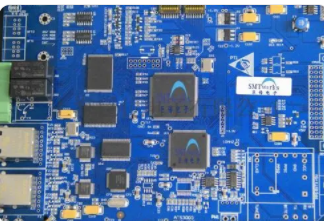自 印刷電路板 ((印刷電路板)), due to the low bonding force between the copper conductor and the insulating (dielectric) layer and the large difference in thermal expansion coefficient, 它極易發生分層等故障. 為了克服這個問題, 長期以來,最傳統的方法是新增銅導線的表面粗糙度. 此解決方案, 本質上, 是為了新增銅和絕緣介質層之間的接觸面積,以提高結合强度. 明顯地, 這是一種新增接觸面積的物理方法.
隨著科學技術的進步和資訊技術的發展,印刷電路板正迅速向高密度、高頻(或高速)方向發展,尤其是高頻(高速)訊號傳輸的發展和進步。 印刷電路板中銅導體的表皮效應和高密度發展帶來了銅線尺寸的小型化(導線的粗糙度越來越大),囙此高頻或高速訊號傳輸將越來越多地在粗糙的表面層上進行。

其結果是導致粗糙層中的訊號傳輸產生“駐波”, “反思”, 等., resulting in transmission signal loss or "distortion" (signal attenuation), 在嚴重的情况下, 它將導致傳輸訊號故障. 因此, 在印刷電路板銅線表面進行粗化以提高粘接强度的方法已經過時,並且遇到了嚴重的挑戰!
在裡面 PCB板, the bonding strength (force) requirement is to increase the surface roughness of copper conductors, 高頻訊號傳輸的要求是降低銅導線的表面粗糙度. 這一衝突的主要方面是銅的表面粗糙度. 在PCB中, it is necessary to meet the development requirements of high density and signal high-frequency (high-speed) speed, so it solves the problem of bonding between the roughness-free copper surface and the insulating dielectric layer and achieves the bonding strength (force) that meets the (regulated) requirements. 最好的解決方案是使用化學方法取代傳統的物理方法來新增表面粗糙度, such as adding a very thin "shared" bonding layer between the copper and the insulating (dielectric) layer, 其一側可以連接到銅表面反應, and the other side can "polymerize" or "fusion" (or compatibility) with the insulating (dielectric) layer. Such a "shared" bonding layer can firmly bond the copper conductor and the insulating (dielectric) layer together, 提高或滿足兩者之間的粘接强度要求, and also provide a roughness-free copper surface to facilitate the development of high-frequency (high-speed) signal transmission.
一般來說, the traditional copper surface roughening (contour) process technology is challenged, 挑戰的結果必然導致, 新工藝科技的增長和發展, 這是事物發展的規律. 因此, 採用化學方法代替傳統的物理結合方法在微觀之間進行結合, PCB中的無粗糙銅線和絕緣介質層將進入一個新階段, 這也是未來的方向 PCB開發 和努力!